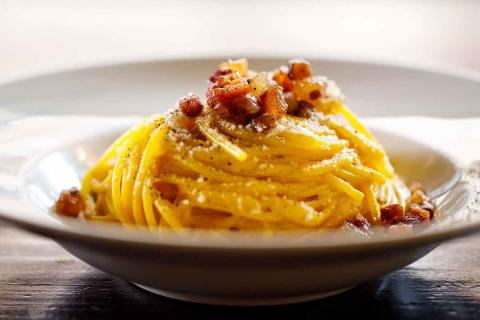Au gratin. Breadcrumbs are the essential ingredient of mussels cooked “au gratin” in the oven, one of the best ways to enjoy this mollusc.
Blue. Mytilus Edilis, the so-called “Blue mussel”, is native to the North Atlantic ocean.
Chorito. The most popular Chilean name for mussels. In this South American country the most widely consumed variety is the Mytilus Chilensis, a typical food of Chiloé, an archipelago in South Chile renowned for a cuisine that melds Spanish influences with those of the Mapuche Amerindian ethnic group.
Debeard. The byssus is the hairy “beard” sprouting from between the two valves which has to be removed by pulling it upwards towards the hinged end of the shell.

Eighth Century. The first mussel farm apparently dates back as far as the late VIII century and was located in France.
Frites. Moules et Frites, mussels and chips are the national dish of Belgium, even though it has now spread throughout France. The mussels may be cooked in various different ways: “marinière”, with cream, without any particular seasoning, with a lemon and mustard sauce, with beer or garlic.
Gill. Mussels filter a huge amount of water through their gills, while retaining the particles and micro organisms contained in it. Therefore, they easily become a receptacle of dangerous bacteria and/or viruses, according to where they live and grow.
Hepatitis. It’s probably the most famous disease that may be contracted from mussels, reminding how much important is freshness and quality when buying seafood.
Impepata. Impepata di cozze is a traditional dish of Neapolitan cuisine which is now popular throughout Italy; it is characterized by the abundant quantity of black pepper – hence its name – used to season the mussels.
Japan. The Mytilus gallo provincialis is the typical variety of the Mediterranean sea – but it is also native to the Black Sea and some areas of the Eastern Atlantic coast. It has now even reached Japan.
Kcal. Just 58 kcal to 100 grams!
Luxury. Provencal mussels are similar to the Marinière recipe, with the addition of tomatoes and herbs, such as thyme and Rosemary. In the eighteenth century, the luxury version called for champagne rather than wine. A century later, truffles also found their way into this recipe.

Mejillónes rellenos. These delicious Basque and Spanish tapas are also known as Mejillónes tigre – tiger mussels. The half shell containing the mussel is filled with a béchamel sauce of one kind or another – with onion, tomato etc. – before being breaded and fried to form a delicious golden crust, all around the shell too.
No pearl? Don’t believe it: pearls are not only the prerogative of oysters. It is possible to find one even in a common mussel. Last year, some scientists of Oxford University found a colony of Mediterranean mussels containing rare black pearls. The previous sighting of a pearl inside a mussel dated back as far as 1965.
Open. Why is it essential for mussels to open up during cooking? To enable the heat to reach the heart of the mollusc in order to kill all bacteria.
Pendant. Some fine hand-crafted pendants and jewellery can be made from blue mother-of-pearl mussel shells.
Quagga. The Dreissena bugensis is a freshwater mussel species. Originally from Ukraine, it has threateningly invaded the Great North American Lakes where it arrived by ship. Its consumption is not recommended owing to an accumulation of toxins.

Reddish. Mussels are of different genders. The fertile Mediterranean females are characterized by the reddish nuances of their flesh, which is sweeter in flavour with a slight smell of iodine.
Spick and span. If the shell is encrusted with barnacles, don’t worry – usually it is a good sign and may indicate that the mussel is wild. Nevertheless, its colour must be bright and limpid.
Trondheim. The Norwegian city hosting the Havfruen Fiskerestaurant, which holds the world record for the most abundant portion of mussels: over 4.898 kg.
Unite. The filaments of the beard firmly unite the mollusc to the surface it is attached to. The strength of this “glue” is such that scientists have been trying for some years now to reproduce it with a view to manufacturing new synthetic materials of equal resistance and elasticity.
Vitamin B12. Spirulina aside, mussels, together with clams, mackerel, herrings and liver are the top foods containing this vitamin.
Wine. Moules à la marinière, one of the most popular mussel dishes worldwide, are cooked with white wine, together with garlic or shallot, parsley and oil or butter.

XXX. In various cultures, Southern Italy for instance, mussels are thought to be aphrodisiac and, for this reason, are eaten raw with a sprinkling of lemon juice, with all the inherent risks.
Years. How old is a mussel? The age of the mollusc determines its texture and flavour: in the “old” creatures – 4 year-old or more – the latter may be too strong and rather unpleasant.
Zebra. Mussels are listed as one of the 100 most dangerous and invasive species in the world. Of these, one of the most damaging is the Dreissena polymorpha, the zebra mussel from Russia, which is similar to the quagga.



